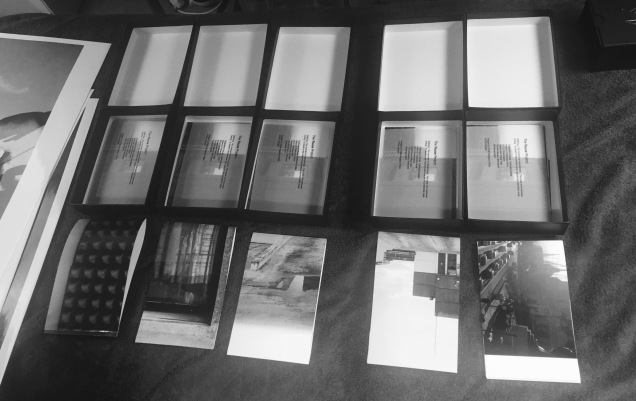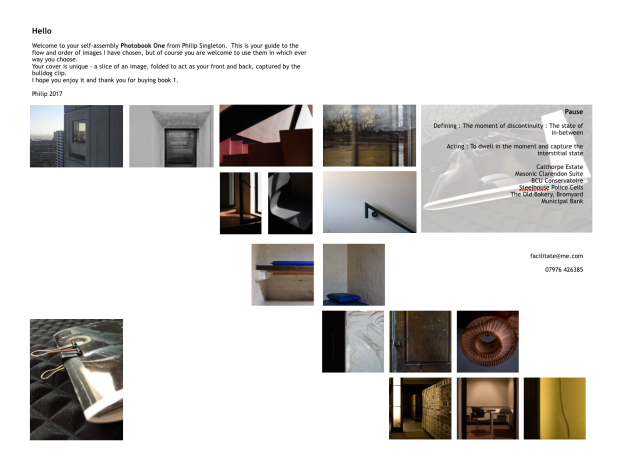MA in Photography, Falmouth University, Module 4, Sustainable Prospects. Research.

figure 1
Michael Mack, interviewed by Alexander Strecker in a recent post in Lensculture, sets out a really personal account of how he ‘ticks’ and what makes the quality of his production such a desirable and tangible thing. Strecker sums him up thus “there are three core beliefs that underpin everything Mack has done: first, mentors are essential; second, human relationships are paramount; and finally, that personal enjoyment is the key to long-term success”.
I make no apology in extracting substantial tracts of the interview as they serve a strong purpose, especially as it sets the agenda for my ambition to make a photobook at a future point.
On his motivations Mack says “I’m driven by a very simplistic, life-affirming notion: I want to keep enjoying what I’m doing. I don’t want to only be running a business, because much of that is quite tedious. You could be selling widgets, if all you’re focusing on is the Excel spreadsheets. In the end, the reason we are doing well is because of our attention to detail and the specificity of each design. I don’t want to do more books. I’d prefer to produce fewer titles that are higher in quality.
On the place for the tangible as opposed to the digital “there was a supposed revolution about to happen in relation to the book and ink and paper. This simply did not occur. In fact, just the opposite: the ever-expanding digital realm created the capacity for small, light-footed entities, both publishing houses and individual artists, to create their own content and market it through digital platforms. That continues to define the moment we’re in right now. It has resulted in many, many people returning to analog, physical forms for various art objects”.
A glimpse about his collaborative approach for which he is renown “Whether someone is working on the street or in their studio, we have to be sure that a book is the best possible presentation for their work. It’s never simply a catalog, a gallery takeaway, we have a studio space where the artists come and work. We bring in our designers and we sit, edit, and talk. We’ll do three days of intense work together, and then they’ll go away for a month. Then we come back together, allowing things to distill further. We give things time”.

Figure 2
A Magnum website discussion between Olivia Arthur, Martin Parr and Fred Ritchen they review the 20 year march of the photobook; here Arthur opines “People still have a huge desire for the book, for the printed object that they can hold.” which is good to read as the future looks positive for the medium. Parr lays down the challenge for both image making and the need for purpose in a publication “Photography is the easiest thing in the world but also the most difficult. It’s very easy to take a body of work and in an afternoon turn it into a book that looks contemporary and exciting but it has no soul, no message, no real substance. People believe they have made an important contribution to photography but they haven’t”
The audience ‘span’ is addressed by Ritchin “Photobooks are having a golden era but the concern is that we are making them for each other,” and he goes on “It’s not sufficient to just talk to each other at this point. I’m looking for something that restates where we are in different ways.” and Arthur expresses her aspiration “I think we see this big cloud which is the photobook audience and what’s interesting is trying to go out and think about things differently and saying I’m going to reach these people because this is what I want to do,” and she volunteers this “We aspire to be like each other, too much so.”
Practice Planning
I aspire to create a photobook on the Pause Project. I therefore peruse photobooks and seek out, not only the product, but the process to establish the timescale, costs, qualities and, overall, the purpose and visual/textual messaging that would create value in the widest sense of that term. Both of these articles provide a good context to the qualitative positioning of a book.
I have started discussions with the Birmingham Chamber of Commerce about presenting the Pause Project, with a view to widening shooting opportunities but also the potential for sponsorship of a book project. To maximise this I will be researching the sponsorship model, knowing full well that it will be often seen by sponsors as a return on investment and as such may be viewed as a form of crowd-funding modelling that will require the offer of a tangible benefit/asset upon completion. Watch this space in 2018.
References
All quotes on Mack and image, figure 1, taken from (accessed 11.12.2017);
All quotes on Mack and image, figure 2, taken from (accessed 11.12.2017);
https://www.magnumphotos.com/theory-and-practice/future-of-the-photobook/



















